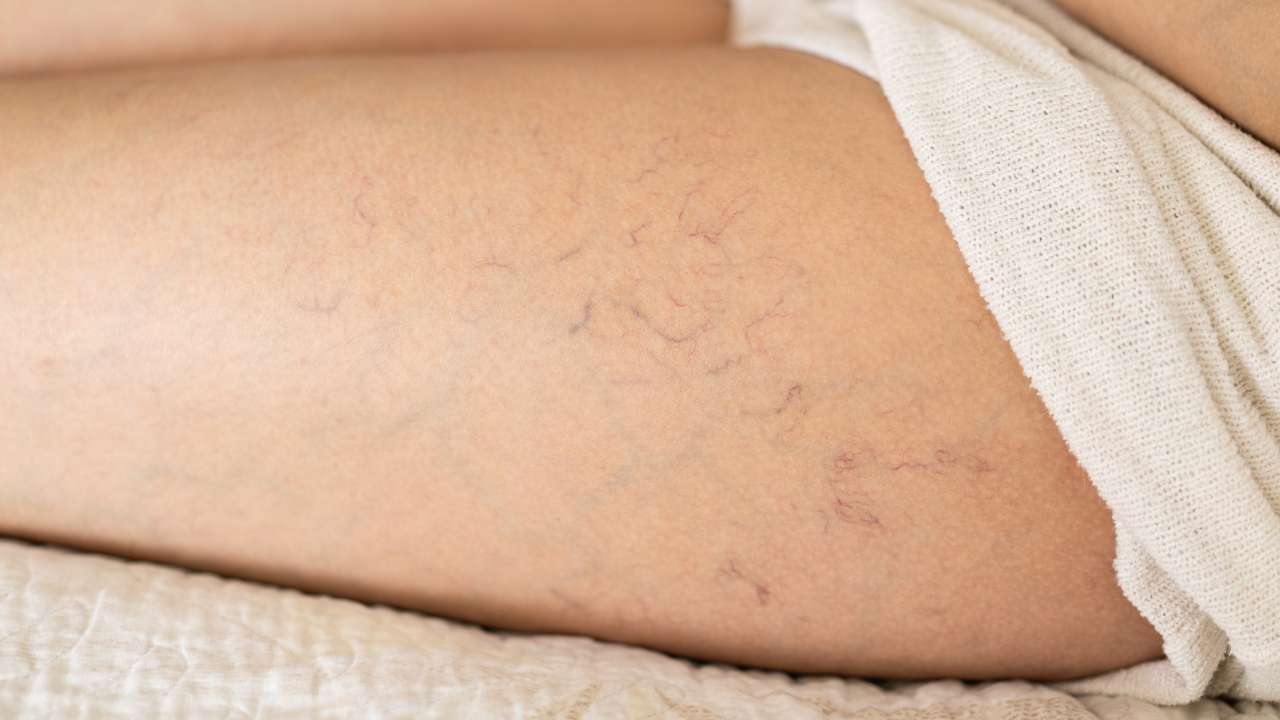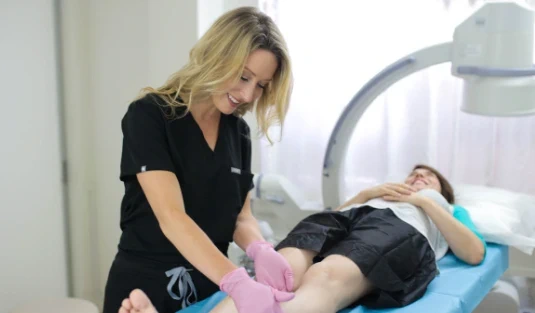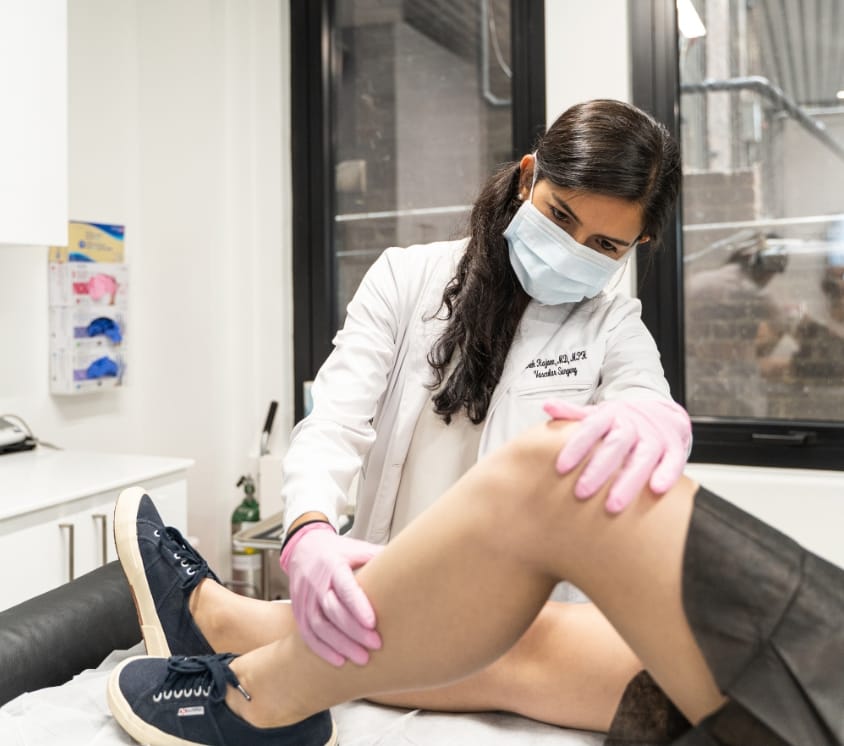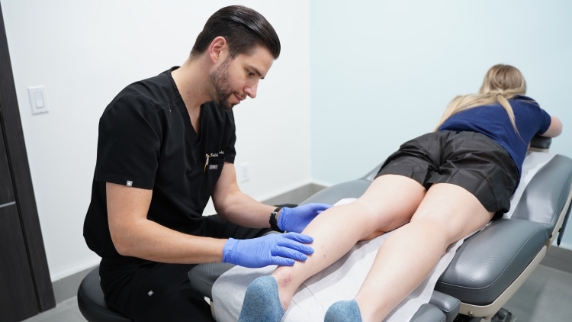Spider veins, medically known as telangiectasias, are small, dilated blood vessels that appear near the skin’s surface. They often resemble a web-like network of red, blue, or purple veins, most commonly found on the legs and face. While many consider spider veins to be a cosmetic concern, they may also indicate an underlying condition known as venous insufficiency. Seeking evaluation from a vein specialist can help determine the cause and the best treatment approach.
What Causes Spider Veins?
Healthy veins function by directing blood back to the heart using one-way valves. However, when these valves become weak or damaged, blood can pool in the veins, increasing pressure and leading to spider veins. This condition is often linked to venous hypertension and deeper vein disease.
Common Causes of Spider Veins:
-
Venous insufficiency – Underlying vein disease causing increased pressure.
-
Genetics – A family history of vein conditions raises the risk.
-
Pregnancy – Hormonal changes and increased blood volume can contribute.
-
Obesity – Extra weight puts strain on veins and impairs circulation.
-
Hormonal fluctuations – Menopause and birth control use can affect vein health.
-
Prolonged standing or sitting – Jobs requiring extended periods of inactivity increase risk.
-
Sun exposure – UV rays can weaken veins, particularly on the face.
-
Previous blood clots or trauma – Damage to veins can lead to dysfunction over time.
Symptoms of Venous Insufficiency
While spider veins are often painless, they can be an early warning sign of venous insufficiency. If left untreated, additional symptoms may develop, including:
-
Varicose veins – Enlarged, twisted veins that bulge under the skin.
-
Leg cramping – Especially at night, disrupting sleep.
-
Swelling and heaviness – Most noticeable in the legs and ankles.
-
Skin discoloration – Itchiness, thickening, or reddish-brown pigmentation.
-
Restless legs – A sensation of discomfort or an urge to move the legs.
-
Ulcers or blood clots – In severe cases, skin ulcers and clotting complications may occur.
Risk Factors for Spider Veins
Spider veins affect both men and women, and over 50% of adults experience them at some point. While aging increases the likelihood, certain risk factors make some individuals more prone:
-
Genetics – A strong predictor of vein disease.
-
Pregnancy and menopause – Increased hormone levels affect vein elasticity.
-
Obesity – Excess weight puts pressure on the venous system.
-
Sedentary lifestyle – Lack of movement weakens circulation.
-
Smoking – Damages veins and restricts blood flow.
-
Previous leg injuries – Can lead to vein dysfunction over time.
When Should You See a Vein Specialist?
If you notice spider veins, it is beneficial to consult a vein specialist for an accurate diagnosis. Early treatment can prevent progression to varicose veins or more severe venous insufficiency. A specialist will:
-
Take a detailed medical history to assess risk factors.
-
Perform a physical examination to evaluate the extent of vein damage.
-
Use ultrasound imaging to detect venous reflux and circulation issues.
Treatment Options for Spider Veins
Thanks to modern advancements, spider vein treatment no longer requires invasive surgery. The following minimally invasive procedures offer quick recovery and long-term results:
1. Sclerotherapy
-
A sclerosing solution is injected into the affected veins, causing them to close.
-
The body naturally absorbs the sealed vein over time.
-
Ideal for small to medium-sized spider veins.
2. Laser Ablation
-
Uses light energy to target and collapse spider veins.
-
It is best suited for facial veins and small veins near the skin surface.
3. Radiofrequency Ablation (RFA)
-
A catheter delivers heat to seal off veins.
-
Often used for larger veins contributing to spider veins.
4. VenaSeal
-
A medical adhesive is applied to close diseased veins permanently.
-
Does not require compression stockings post-treatment.
5. Phlebectomy
-
Small incisions allow for the manual removal of larger veins.
-
Typically used in combination with other treatments.
Choosing the Right Treatment
Your condition, symptoms, and medical history determine the best treatment. Consulting a board-certified vein specialist ensures personalized care and effective results.
Conclusion
While spider veins are often considered a cosmetic concern, they can indicate deeper vein disease. If you experience symptoms of venous insufficiency, scheduling an evaluation with a specialist can help prevent complications and improve your vein health. With minimally invasive treatment options available, relief from spider veins is more accessible than ever.















